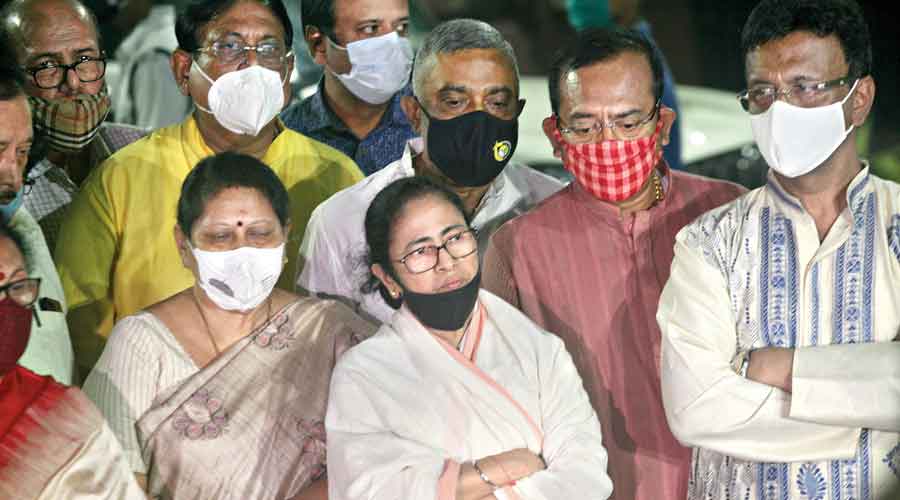The death of Subrata Mukherjee has robbed Bengal of one of its most colourful characters and marks the departure of the last of a triumvirate that came to be known as the Three Musketeers of the Congress in the turbulent 1960s and 1970s.
The other two were Mukherjee’s political mentor Priya Ranjan Das Munshi and Somen Mitra.
Mukherjee himself would go on to mentor Mamata Banerjee who now strides the Bengal political landscape unrivalled.
“On the night of the festival of lights, I never thought such darkness would descend on us…. I won’t be able to look at his mortal remains. That’s why I won’t be part of his final journey on Friday,” Mamata said on Thursday after visiting SSKM hospital where Mukherjee breathed his last, aged 75.
The passionate patron of Ekdalia Evergreen — overseeing and micro-managing the south Calcutta puja a few weeks ago — had gone to SSKM for a check-up on October 24. Doctors had then advised hospitalisation over certain respiratory issues. He had apparently been doing well since an angioplasty and insertion of stents, but his condition deteriorated on Thursday.
“I don’t know what happened. The SSKM principal had come to the Kali Puja at my residence earlier this evening and he said Subratada was doing well and would be released tomorrow. Not long after, this happened,” Mamata said on Thursday night.
“Such a remarkably jovial man, with such a great sense of humour… always looking to help, always smiling, always looking to be of service to the people. Such people are rarely found any more,” she added.

Mamata outside SSKM hospital on Thursday night after learning of Subrata Mukherjee’s death Telegraph picture
As a youngster from Sarengabad in Budge Budge, Mukherjee had entered politics in the mid-1960s. The student of BSc in anthropology in Calcutta’s Bangabasi College met Das Munshi there.
Mukherjee secured an MSc in archaeology and a postgraduate diploma in museology from Calcutta University. He also obtained a postgraduate certificate in cultural anthropology from the SOAS University of London.
The political fortunes of Mukherjee, who was noticed by Indira Gandhi, rose when Siddhartha Shankar Ray inducted him into his ministry. He was 26.
During his more than half a century of public life, Mukherjee was in the Congress for several decades before joining the Trinamul Congress. He then had a brief stint in the NCP and another in the Congress before spending the final phase of his life in Trinamul.
Mukherjee was one of Ballygunge’s best-known residents and represented the constituency multiple times. Other than the post-Emergency election in 1977, Mukherjee never lost an Assembly election.
He was widely regarded as one of the most proactive mayors of Calcutta since Independence. Mukherjee helmed the civic corporation between 2000 and 2005.
A veteran trade union leader, Mukherjee was Bengal’s minister for panchayat and rural development, and of public enterprises and industrial reconstruction, at the time of his death.











